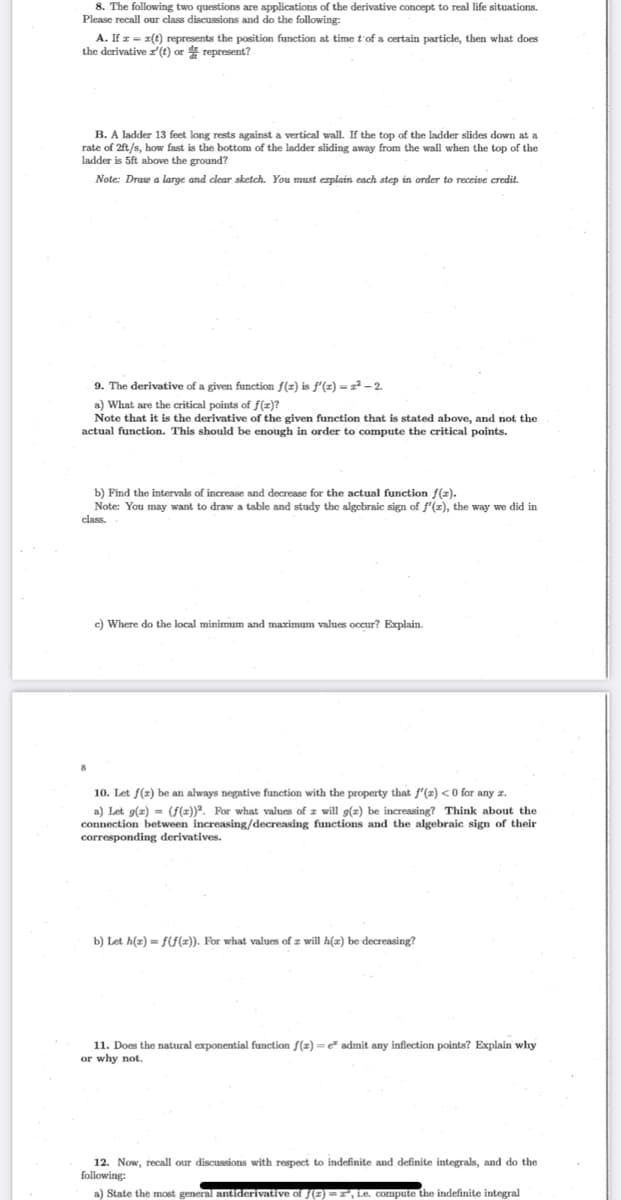8. The following two questions are applications of the derivative concept to real life situations. Please recall our class discussions and do the following: A. If z = z(t) represents the position function at time t of a certain particle, then what does the derivative z'(t) or represent? B. A ladder 13 feet long rests against a vertical wall. If the top of the ladder slides down at a rate of 2ft/s, how fast is the bottom of the ladder sliding away from the wall when the top of the ladder is 5ft above the ground? Note: Draw a large and clear sketch. You must ezplain cach step in order to receive credit. 9. The derivative of a given function f(z) is f'(=) = =2 - 2. a) What are the critical points of f(z)? Note that it is the derivative of the given function that is stated above, and not the actual function. This should be enough in order to compute the critical points. b) Find the intervals of increase and decrease for the actual function f(z). Note: You may want to draw a table and study the algebraic sign of f'(z), the way we did in class. e) Where do the local minimum and maximum values occur? Explain. 10. Let f(2) be an always negative function with the property that f'(2) <0 for any z. a) Let g(z) = (f(2))². For what values of z will g(z) be increasing? Think about the connection between increasing/decreasing functions and the algebraic sign of their corresponding derivatives.
Addition Rule of Probability
It simply refers to the likelihood of an event taking place whenever the occurrence of an event is uncertain. The probability of a single event can be calculated by dividing the number of successful trials of that event by the total number of trials.
Expected Value
When a large number of trials are performed for any random variable ‘X’, the predicted result is most likely the mean of all the outcomes for the random variable and it is known as expected value also known as expectation. The expected value, also known as the expectation, is denoted by: E(X).
Probability Distributions
Understanding probability is necessary to know the probability distributions. In statistics, probability is how the uncertainty of an event is measured. This event can be anything. The most common examples include tossing a coin, rolling a die, or choosing a card. Each of these events has multiple possibilities. Every such possibility is measured with the help of probability. To be more precise, the probability is used for calculating the occurrence of events that may or may not happen. Probability does not give sure results. Unless the probability of any event is 1, the different outcomes may or may not happen in real life, regardless of how less or how more their probability is.
Basic Probability
The simple definition of probability it is a chance of the occurrence of an event. It is defined in numerical form and the probability value is between 0 to 1. The probability value 0 indicates that there is no chance of that event occurring and the probability value 1 indicates that the event will occur. Sum of the probability value must be 1. The probability value is never a negative number. If it happens, then recheck the calculation.

Step by step
Solved in 2 steps with 2 images









